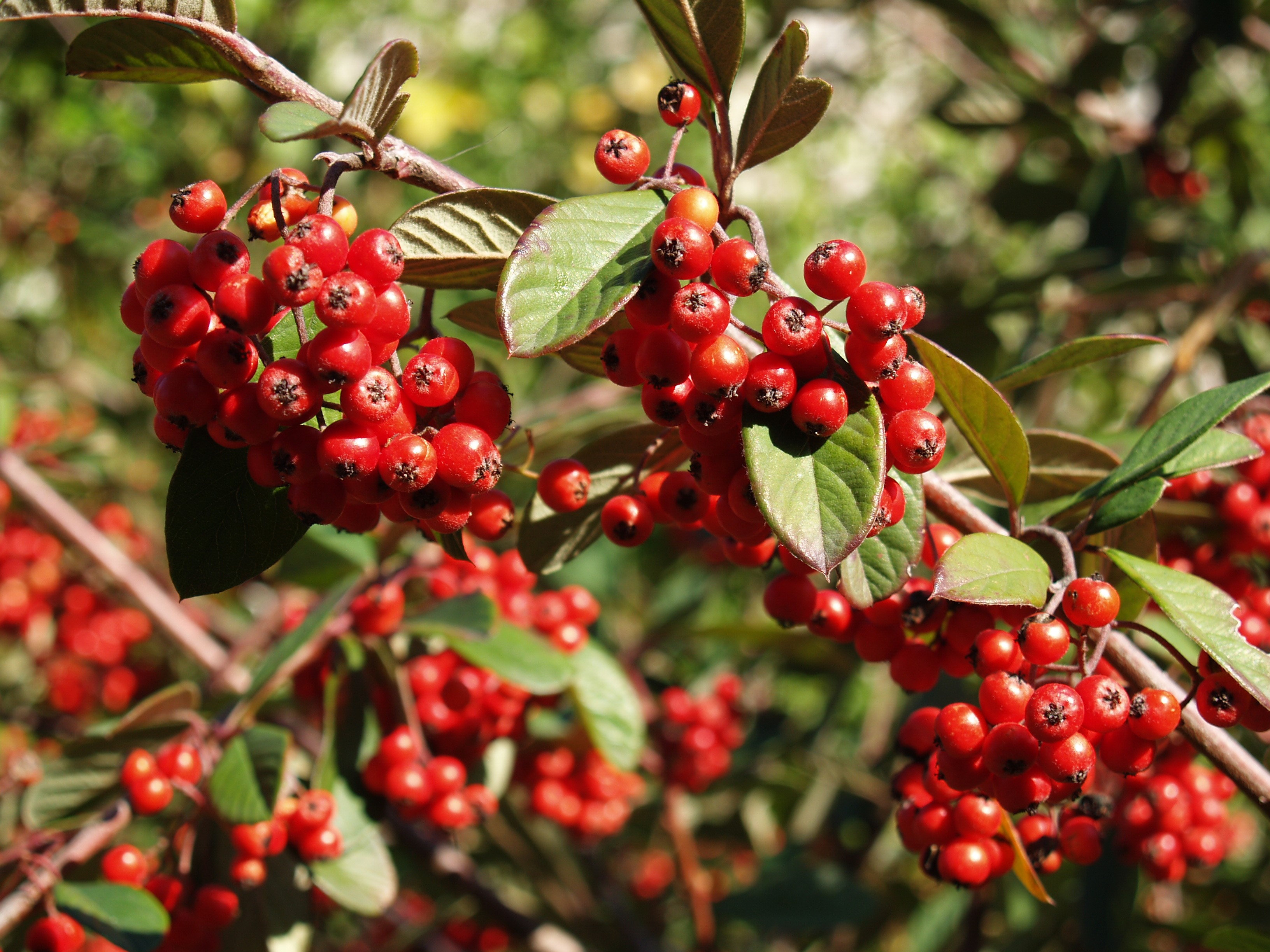
Milkflower Cotoneaster
Cotoneaster lacteus
Family and description
Member of the Rosaceae family and of the Cotoneaster genus, the Cotoneaster lacteus is a persistent leaf shrub that can grow up to 4m in height. It is a dense, rounded and medium-sized plant, with arched branches.
Its leaves are alternate, obovate to largely elliptical, with very pronounced ribs. The upper side is dark green and the underside is covered with a white felt, almost velvet, texture.
The specific epithet lacteus refers to its white flowering which occurs in spring and summer, in large corymbs of odorous and melliferous flowers with five small petals.
In the autumn, the fruit appear, small red pear-shaped drupes (pyriform), which remain on the plant during the winter.
Origin and habitat
Originally from southwest China, the milkflower contoneaster can be found growing in the wild in several countries.
It prefers good sun exposure, as well as partial shade. It does well in many types of soils, but requires well-drained soils as it does not tolerate root drenching.
It is a fast-growing plant that is resistant to drought and cold, and does not require much maintenance.
Uses and curiosities
This species propagates in the autumn, by seeds or cuttings. It is usually grown for hedging, as it resists pruning well.
Of great interest to the fauna, milkflower contoneaster flowers attract insects while its fruit is appreciated by many birds.
